From Fabrica comes a link to 5 Minute Friend:
If you access to the site with a webcam it will randomly connect you with another person in the world just for 5 minutes. There is no way to meet the other person again if you didn’t exchange your contacts during those 5 minutes. This site works only if many many people from around the world keep connecting every moment…
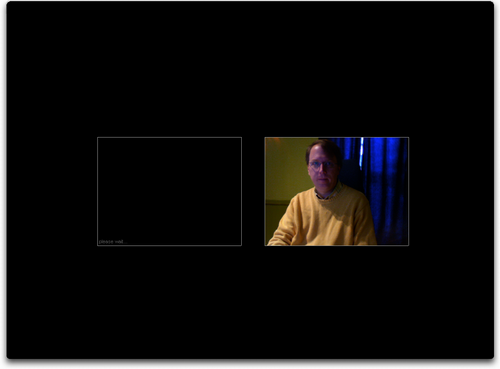
Today’s side-project: bring the world of Plazes together with the world of 2D barcodes to create printable information sheets for individual Plazes. The result: http://givesome.info/, a tool that makes things like this:

The idea is that crazy mobile camera-phone owners can walk up to the sheet posted on the wall at the Plaze in question and use a barcode reader application (see here to get one) to translate the barcode into a URL:
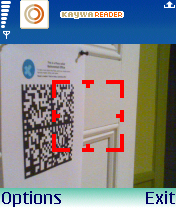
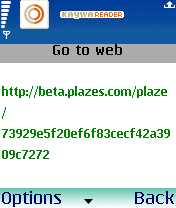
…that can then be used to open the mobile browser on the phone to the page for that Plaze. In theory, on that page they’ll find useful information about where they are: reviews, comments, who’s been there before, and so on. It doesn’t take too much imagination to imagine this becoming the mechanism for a new-style “point and shoot” Plazer.
This is just a little experiment in bridging Plazes to the physical world: please let me know if you have any difficulties making this work. I owe a great debt to the excellent Semafox project, from whence the “make a barcode in JavaScript” code comes.
Six years ago we were forced to renovate our kitchen in the middle of the winter after water flowed in from the roof as a result of tremendous ice build-up that February. We used the opportunity to purchase a new stove and we decided to spend more than was necessary to get a higher-end convection oven in a model from KitchenAid:
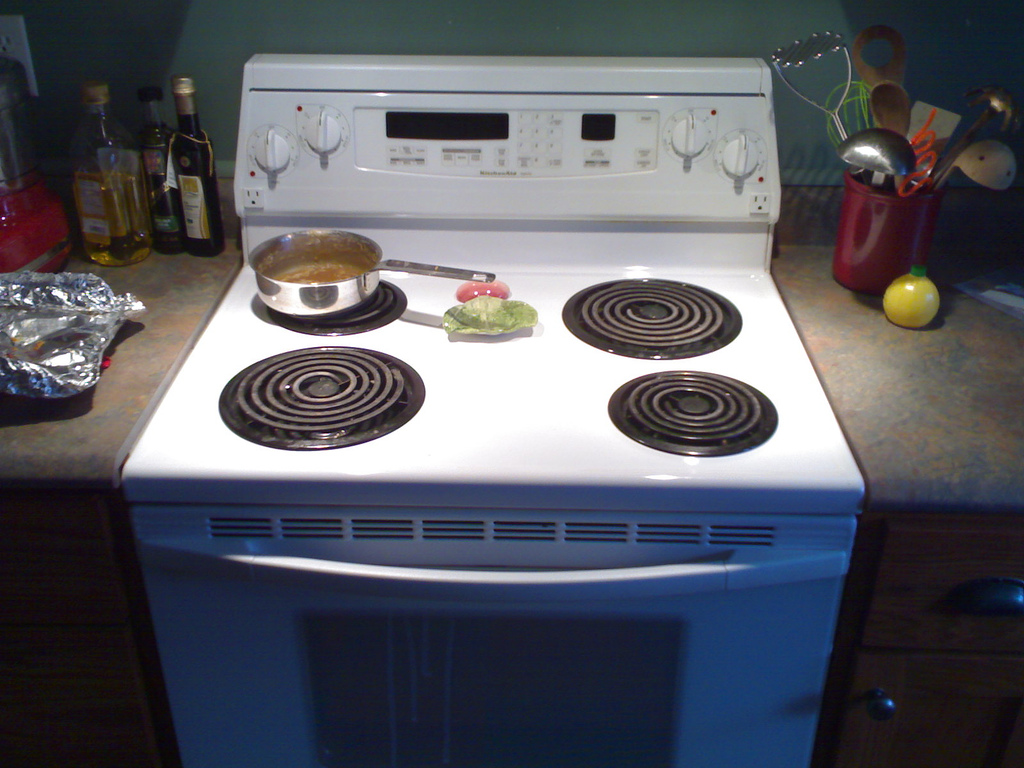
We bought this stove from Sears in the spring of 2001, and we’ve always been very happy with it. Until last month, when it slowly stopped working. The stove-top elements have no problems. But the digital clock stopped displaying the time, and refused to allow itself to be set. Then the electronic touch controls that are used to drive the oven stopped working. First it was just some of the time, now it’s almost all the time.
[[Catherine]] had our excellent appliance man in to take a look, and his diagnosis was a problem with the wiring for the controls. It wasn’t something he could repair, either: we needed a whole new set of electronics. And the cost? $465.
With installation, that’s as much as it would cost, almost, to replace the stove entirely. And we could certainly get a slightly more modest stove and have money left over.
So now we’re faced with a decision: do we fork out the $600 and repair this stove, which will prevent the stove from ending up in the landfill and is the “green” thing to do. But in another 6 years might require we fork out the same amount again when the next set of controls fry. Or do we buy a whole new stove — probably not from KitchenAid! — and junk the old one — perhaps the more “sensible” thing to do.
Sigh.
I first got interested in 2D barcodes after following a link on Guy Dickinson’s website to Semacode.org last July.
So interested, indeed, that I made myself a T-shirt:
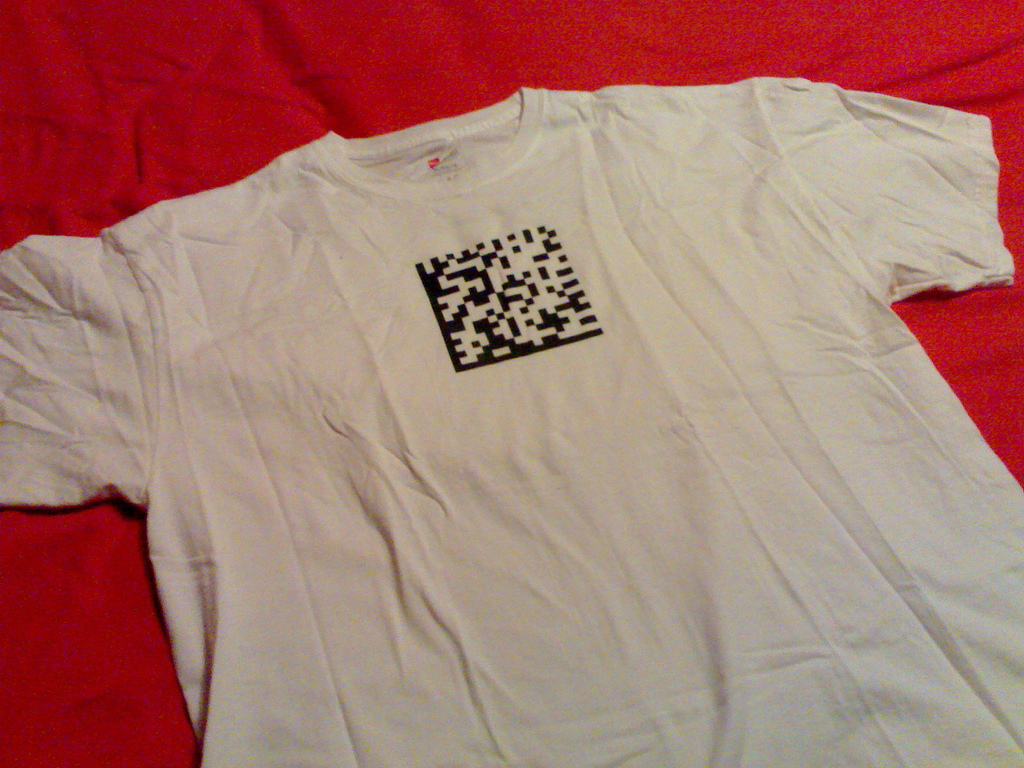
The 2D barcode on the T-shirt, when it gets “decrypted” by a barcode reader, translates to http://ruk.ca — the address of this website. The idea is that a suitably equipped mobile device can be pointed at the T-shirt and its web browser automagically taken to this web address.
I did my original experimenting with the Semacode reader for my [[Nokia N70]]. This week, inspired by Nokia’s recent interest in 2D barcodes — they call them “mobile codes” — I grabbed The Kaywa Reader. It’s a very slick application that “just works.” I fired up the app, pointed it at my T-shirt and, without any action on part, the following popped up on my mobile:
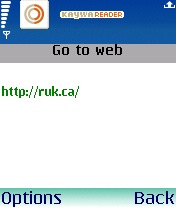
It all worked so seamlessly that it was magical enough to show off some of the true promise of this crazy scheme. Of course this could all turn out to be simply another variation on the CueCat debacle. But I’ve got some ideas…
If you want to try making your own 2D barcodes, you can use Kaywa’s tool or the Semacode tool.
Jott is a very neat concept: after you sign up for an account, you phone a toll-free number, speak a destination (“me” or “mom” or “pat binns”) and then dictate a message. Jott takes your message, converts it to text, and delivers it to the destination you specified.
My first test of the service didn’t work all that well, though. My message was:
I need to contact Diane Griffin about the report for the L.M. Montgomery Land Trust.
The Jott transcription of the message was:
I need to contact Diana Crissine about the report for Allan land trust.
To the service’s credit, the words it didn’t recognize properly were proper names, and I did have the option of spelling those out (proper names are the bête noire of text-to-speech and OCR).
Market focus on Canada is an article in the expat-focused GuardianAbroad website providing a basic overview for non-Canadians looking to purchase property here. Always interesting to see the country from the outside in.
By the way, the Humber Valley Resort in Newfoundland mentioned in the article was the subject of an episode of Venture’s Dreamers and Schemers on CBC Television last season (you can likely catch it as a re-run on Newsworld this spring or summer).
An interesting side-note to their story: the airline they charter to ferry Europeans to Deer Lake, Newfoundland is the self-same Monarch Airlines that we flew last month from London to Lisbon.
Last night while waiting for the bus uptown, I stopped in at Indigo to get out of the rain and browse around for a while. In the cookbook section I came across a couple of volumes from German publisher Gräfe & Unzer in a series they call “basics” and I ended up purchasing Vegetarian Basics, which turned out to be on sale for about $10.
The design of the books is beautiful: they’re full of colourful photographs of sexy Germans making food (and photos of the sexy food itself), the writing is witty and the recipes simple. They are less “cookbooks” and more “cooking manuals” but without any hint of the prostration required for the “…for Dummies” books.
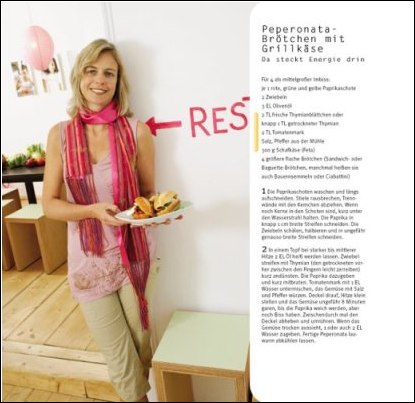
It turns out that Sebastian Dickhaut, who conceived of the basics series, has a weblog which, although it’s in German (Google’s English translation thereof), is worthwhile reading if you don’t read German for the beautiful photos of food you’ll find there.
There’s more about Sebastian on his personal website; here’s a poorly-translated (by Google) partial biography:
Born I am 1963 in bath Nauheim in Hessen. My father had bought an old hotel before there, had made from this a psychiatric sanatorium and had finally married my nut/mother. At the beginning they still drove in the morning on the supermarket, in order to get food for the hospital kitchen, in which I was dearest during the day. Each noon met we there in a Glaskontor beside the enormous stove, in order to eat with the cooks and physicians to noon.
There are plenty of copies of Vegetarian Basics left at the Charlottetown Indigo, and many copies of the meat- and fish-included Cooking Basics too (which is bound in resplendent yellow). They’re all piled on a table in front of the faux fireplace on the right-hand side of the store.
I mentioned this five years ago, but it bears repeating: Prince Edward Island residents can pay $10 for a “community ID” and get borrowing privileges from the Robertson Library at the University of PEI. Mine was due for an update — since I originally got it many years ago they went all “smart card” — and so I stopped in today and got a new one:
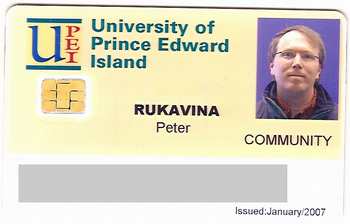
My operative G. tells me that I can somehow parlay this into a card that lets me add cash and use the photocopier in the library too, but I haven’t tried that yet.
Holland College extends similar privileges to Islanders.
Add to this the feature of islandlibraries.ca that lets you request items from the Provincial Library, Holland College and UPEI collections be delivered to your local library.
PEI residents have excellent, free access to a stunning array of library resources.
Make Internet TV, from the same people who bring you the Democracy Player, brings together in one place almost all the information you need to make your own television show on the Internet. Put this together with the secret cache of video gear at UPEI and there’s nothing stopping you.
 I am
I am